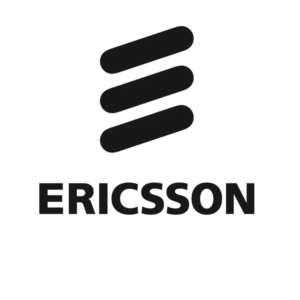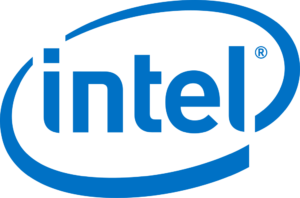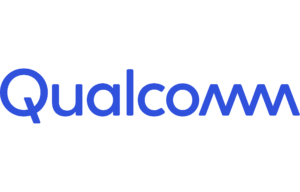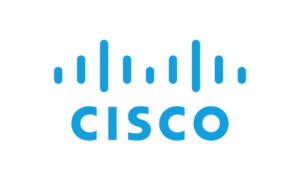5G is changing the way that enterprises think about high-speed and broadband networking, with the capability to increase access, speed, and processing capacity for a growing number of users and devices. This cellular technology provides the power that enterprises need to not only optimize remote and global working scenarios, but also to create and use new technologies with the Internet of Things (IoT), artificial intelligence (AI), and edge computing.
5G network providers and other 5G vendors have noticed the increasing demand for enterprise 5G and are working to provide a spectrum of 5G solutions for customers. Learn about some of the best 5G network providers for business here and how they are meeting the infrastructure, hardware, service, and application needs of their enterprise customers.
What Is a 5G Network?
5G is an abbreviated name for the fifth generation of cellular technology. Previous generations of cellular technology, such as 4G and 4G LTE, created widespread global access to high-speed networking, mostly for personal mobile devices. But no previous generation has offered the spectrum and speed necessary for most enterprise use cases.
These are the key changes that 5G offers from previous generations:
- Speed: 5G is faster than all previous generations, typically reaching speeds between 50 gigabits per second and three gigabits per second.
- Latency: 5G significantly reduces latency and time for data processing, which is important for cloud and edge computing operations.
- Accessibility: 5G is currently only available in some urban settings and private enterprise setups, but as the technology advances, 5G vendors are hoping to expand connectivity to new global and rural areas.
- Bandwidth/capacity: 5G requires less operational bandwidth because different 5G frequencies and use cases can operate on separate, smaller slices of the overall network spectrum.
Learn about fixed 5G networks here: The Future of Fixed 5G Networks is Now
Types of 5G Network Providers
Cellular networks are made possible by a variety of vendors and technologies.
- Cellular service providers, such as AT&T and T-Mobile, offer spectrum to public and enterprise users so that they can use 5G services on their mobile devices.
- 5G infrastructure providers, such as Ericsson and Nokia, provide the base stations, edge nodes, and other major pieces of provider-managed equipment necessary to make 5G services work.
- 5G hardware providers, such as Intel and Qualcomm, provision smaller pieces of equipment for 5G compatibility like processor chips and semiconductors.
Some other types of products and services that 5G network providers offer include 5G- and edge-designed security, compliance management, and 5G device sales and deployment.
Learn about setting up your 5G security for success: 5G and New Enterprise Security Threats
What Is Enterprise 5G?
Public 5G has not reached most corners of the globe yet, and even where it exists, the public access format can pose challenges for enterprise security and access management. For these reasons, many businesses are opting to set up enterprise 5G, or private 5G networks, to give their leaders more control over and their employees better access to 5G connectivity.
With a private 5G strategy, an enterprise purchases spectrum from mobile network operators (MNOs), the government, or a third-party spectrum provider. They then purchase any necessary 5G-compatible equipment from 5G infrastructure providers and use 5G and edge devices to get their private networks connected. With the private design of enterprise 5G, enterprises can begin developing and using complex IoT and edge technologies that require high speed and bandwidth to function.
Learn more: What is a Private 5G Network?
Best 5G Network Providers
Ericsson 
Ericsson is a Sweden-based international provider of infrastructure, software, and services for telecommunications service providers. The company is widely considered one of the earliest pioneers and most significant contributors to 5G advancements, and they claim to be “the first company to bring 5G to four continents.”
Similar to competitors like Nokia, Ericsson holds some of the most crucial 5G patents in the market and is continuing to do important research to standardize and propel 5G solutions forward. Especially with its roots in the early days of Bluetooth technology, Ericsson is well-positioned to offer new avenues of communication and connection for its customers.
Features:
- Ericsson Radio System allows operators to launch the new technology and grow 5G coverage fast—no matter the scale and complexity
- Ericsson Spectrum Sharing allows for accelerated 5G rollouts using existing hardware
- Publicly partnered with 85 unique service partners
- 121 live 5G networks across 54 countries
- Standalone and integrated 5G private networks available
Pro: Ericsson is a 5G pioneer, especially when it comes to global infrastructure. Despite their leadership in 5G, they still offer several 5G solutions that are compatible with older devices and 3G/4G operations.
Con: Ericsson has faced some controversy over civil charges for foreign corruption and compliance issues.
Nokia 
Nokia is a Finland-based international provider of telecommunications infrastructure and IoT solutions. The company also used to be one of the largest mobile device vendors in the world, but its sharp decrease in mobile device sales led them to focus on the infrastructure side of their business, with the company playing a major role in the advancement of GSM, 3G, and LTE.
One of Nokia’s key differentiators is its Agile Rules Technology (A.R.T.). It is Nokia’s rules engine that creates call flow models and sets data requirements for a spectrum of typical business telecom use cases. The engine improves runtime efficiencies and caches key data requirements, thus further increasing efficiencies in Nokia 5G solutions, such as Signaling.
Features:
- Technology to provide 5G network signaling catered to industrial service scenarios
- Nokia 5G Core with cloud-native architecture, automated security management, and capability to deploy in public and hybrid cloud environments
- Core is deployable on Nokia Container Services, RedHat OpenShift, VMware Tanzu, Amazon Web Services (AWS), Google Cloud Platform (GCP), and Microsoft Azure
- Open networks with cross-domain automation and service intent orchestration
- Multi-vendor continuous delivery for Nokia Core
Pro: Nokia’s 5G Edge Slicing solution helps operators offer flexible, secure, and high-performing VPN services over commercial 4G and 5G networks. It was the industry’s first 5G edge slicing solution.
Con: Nokia’s mobile devices do not always offer the same mature use cases and features as other mobile device providers.
T-Mobile 
T-Mobile is a top mobile services provider that works with both private and commercial customers for a variety of mobility needs. T-Mobile is still smaller than its competitors, Verizon and AT&T, in several other categories, but when it comes to 5G access and technologies, T-Mobile has quickly pulled ahead. The company offers more widespread public 5G coverage in the United States than both of the other two providers, and it is frequently considered the fastest 5G provider of the three for signal and download speeds.
Especially after its merger with fellow large telecommunications player, Sprint, in 2020, T-Mobile is poised for continued growth among 5G service providers.
Features:
- Ultra Capacity 5G with high speeds and widespread access
- Extended Range 5G, with low-band 5G signals, for improved indoor and rural coverage
- 5G-enabled devices from Apple, Samsung, Google, T-Mobile, OnePlus, Nokia, Motorola, and TCL
- Low-, mid-, and high-band spectrum solutions available and capable of collaborating with each other
- Unlimited data, talk, text, and video streaming business package solutions
Pro: T-Mobile offers the most comprehensive access to 5G public networks currently, including in many rural areas.
Con: Although T-Mobile promotes its high speeds, some users have reported disparities in expected vs actual speed of services.
AT&T 
AT&T is another top cellular service provider for both enterprise and personal mobility solutions. Although many of its 5G solutions for business are in nascent stages, the company is putting in extensive research and expanding its partner network to bring top 5G solutions to its business customers. With current 5G customers, AT&T has been able to assist with everything from real-time factory floor insights to livestreaming and fan experiences at stadium events.
Features:
- Nationwide FN8 5G network availability
- 5G+ networks available in 35 metropolitan areas
- Samsung, LG, Motorola, and Netgear 5G devices available
- AT&T Multi-Access Edge Computing
- AT&T Private Cellular Networks – Events version with 5G access
Pro: For Private Cellular Networks – Events, AT&T offers rapid 5G+ mmWave temporary deployments through data-only connectivity.
Con: AT&T offers private cellular network options with localized wireless LTE core, but they do not yet have a 5G option rolled out.
Verizon 
Verizon is one of the largest global telecommunications service providers, and many reviewers believe they have the best coverage for previous cellular generations like 4G and 4G LTE. Although they are quickly growing their 5G portfolio and its accessibility to personal and business users, Verizon still currently sits behind T-Mobile and AT&T in United States coverage areas.
Verizon is a strong 5G contender for certain niche industries. The company specializes in public sector 5G use cases, with guided customer support and specific security and deployment features necessary for government and educational institutions. Verizon also offers THOR, a rapid response command center that can deploy with its own mobile network whenever necessary.
Features:
- Public sector-specific 5G solutions for federal agencies, state and local governments, public safety agencies, and educational institutions
- Verizon 5G Ultra Wideband now more widely available in the United States
- Verizon 5G Edge mobile edge computing platform
- 5G Business Internet and onsite 5G solutions
- Business 5G devices from Apple, Samsung, Google, and Motorola
Pro: Verizon offers strong tech and deployment support that can be especially beneficial for small- to medium-sized businesses.
Con: Compared to competitors like T-Mobile and AT&T, Verizon does not offer comprehensive 5G coverage across different United States regions.
Intel 
Intel is a California-based global semiconductor and technology company that has quickly transformed its chips and other networking hardware to measure up to the operational expectations of 5G devices and infrastructure. For example, Intel released the Agilex FPGA chip in 2019 to better meet the processing needs of 5G and modern data centers. Intel has also been one of the earliest investors in 5G-powered technologies like self-driving cars, and the company continues to invest finances and research into emerging technologies like augmented and extended reality (AR/VR) applications and gaming.
Features:
- Network-optimized CPUs with ASIC and FPGA-based accelerators and SmartNICs
- Network Builders offers more than 500 industry partners for edge and network infrastructure support
- Support for radio access network (RAN) virtualization
- Intel Xeon D Processor for processing larger edge workloads
- Involved in standards and industry groups such as ITU, 3GPP, ETSI, IEEE, and the Wi-Fi Alliance
Pro: Intel has prepared several security solutions to meet the needs of 5G and cloud-native technology, including lawful intercept and private key management for Control Plane.
Con: Especially with current supply chain challenges, the latest Intel processor chips can be incredibly difficult to acquire.
Qualcomm 
Qualcomm is a global semiconductor, wireless service, and software provider and is considered a 5G innovator. The company claims over 150 5G licensing agreements and patents, many of which were started before 5G truly came into existence.
Qualcomm’s Snapdragon 5G platforms and chipsets are major draws for customers, especially within specialized industries like automotive. The Snapdragon Automotive 5G Platform offers users granular location positioning, 3D navigation, 3GPP Release 15-compliance, and multiple modes of operation.
Features:
- Snapdragon 5G platforms with support for mmWave, sub-6, and multi-gigabit speeds
- 5G Modem-RF systems for commercial modem-to-antenna 5G
- Qualcomm QTM527 mmWave antenna module for 5G fixed wireless access (FWA)
- Support for always-connected PCs (ACPCs)
- Global roaming with support for all key spectrum frequencies and cellular modes
Pro: Qualcomm has a comprehensive vision and offers a transparent strategic roadmap so customers can understand their future 5G plans.
Con: Some organizations, particularly competitors like Nokia, have alleged that Qualcomm charges unfair prices for the use of their patents.
Cisco 
Cisco has long been recognized as a networking and security leader, and it’s beginning to develop its reputation in 5G as well. Cisco’s 5G network architecture capitalizes on the company’s expertise in IoT and security, with particular emphasis on secure routing, gateways, firewalls, and converged SDN transport. Cisco’s 5G Transport and xHaul solution is considered one of the best radio access network supports with backhaul, midhaul, and fronthaul features available.
Features:
- Cloud-to-client, open, multivendor, multi-technology 5G architecture
- Support for network service monetization
- Open vRAN for building and assessing software solutions
- 5G-compatible crosswork automation and network optimization
- Packet core and cloud services stack
Pro: Cisco offers an extensive policy suite for 5G that covers mobile policy, charging, and subscriber data management.
Con: Initial deployment of certain tools in this portfolio is difficult; some users have had difficulty accessing and working with Cisco customer support.
Why Are 5G Networks Important?
Networking support for IoT and edge devices
One of the most crucial benefits of 5G networking is the new types of technology that it supports. 5G provides the power, accessibility, and speed necessary for IoT devices to process data through the cloud (and the edge) effectively. 5G-enabled IoT leads to a variety of enterprise and consumer benefits, ranging from real-time business insights with greater depth to more accessible user experiences. In fact, we’re reaching the point where 5G and IoT can lead to life-changing technologies and services, like precise robotic surgery.
Improved security management and visibility
5G networks, especially when they’re set up with equally mature user and infrastructure monitoring solutions, can lead to quicker data and performance insights for network and security administrators. Speed is the most important factor in quickly detecting and stopping a security breach, and 5G offers higher speeds than any previous cellular networking generation.
Infrastructure for sustainability
5G networks make it possible for enterprises to use smart devices that detect environmental problems or inefficiencies in their products, equipment, buildings, and supply chains. Smart buildings, smart irrigation systems, and a variety of other smart energy solutions can lead to more sustainable business practices and decrease an enterprise’s carbon footprint when implemented.
Learn more about how companies are improving sustainability with 5G support: The Role 5G Can Play in Global Sustainability Efforts
Additional Enterprise Considerations for 5G Implementation
Investing in enterprise 5G solutions is an exciting opportunity for today’s businesses, but it’s important for prospective 5G customers to do focused research on the 5G providers they’re considering before diving in.
Some 5G providers, such as Huawei and ZTE, have faced problems or even been banned by several countries’ governments for compliance, bribery, and security concerns. Other providers are really only providers in theory, as they discuss the exciting potential of 5G innovation, but have not yet offered concrete products or a 5G roadmap to customers.
If your company has already decided that they’re willing to invest in the different services, infrastructure, hardware, and software solutions necessary to run on 5G, it is absolutely worth your time to look closely at what 5G providers are actually offering customers, if those solutions are available to you, and if their approach aligns with your current strategies and future goals as a business.
Read next: Best Network Security Software & Tools
The post Best 5G Network Providers for Business 2022 appeared first on Enterprise Networking Planet.

